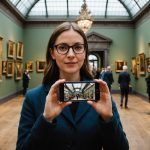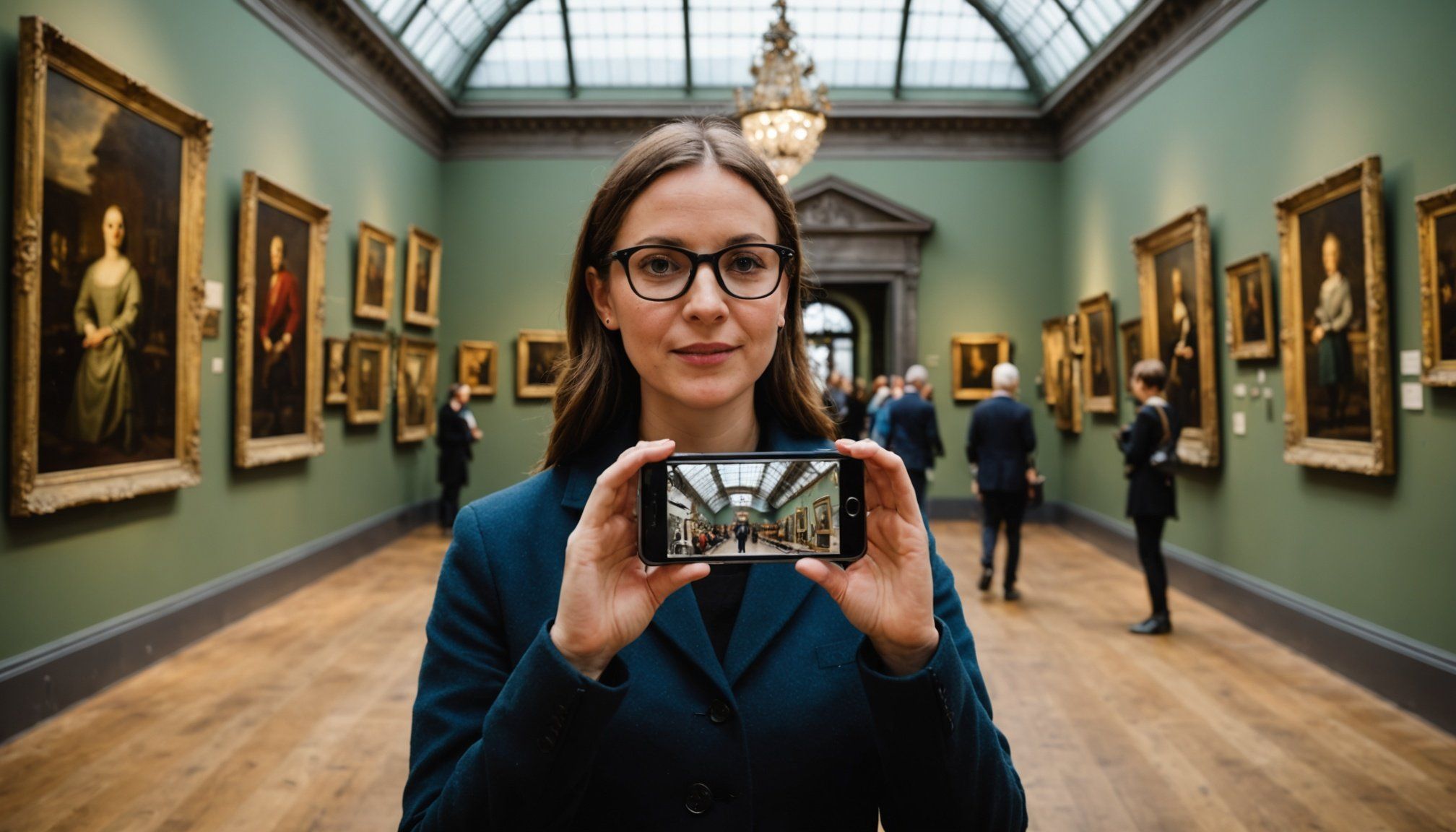Introduction to Augmented Reality in Museums
Augmented reality (AR) is reshaping how visitors interact with UK museums, offering a fresh and dynamic museum experience. By overlaying digital information onto real-world views, AR technology transforms static displays into engaging, interactive experiences. Visitors are no longer passive observers; they become explorers, uncovering stories and details through their smartphones or AR glasses.
The modern museum strives to enhance the visitor experience through technology, and AR plays a crucial role in this evolution. By seamlessly integrating digital content into exhibits, museums can cater to diverse learning styles and maintain engagement across different age groups. Whether it’s animating historical figures or offering multilingual audio guides, AR provides layers of information that enrich the educational journey.
Also read : Discover the best employer branding campaigns that shine
AR’s growing significance in cultural tourism underscores its potential to attract a broader audience. By offering unique and memorable experiences, AR can increase museum attendance and elevate the cultural significance of these institutions. As museums embrace this innovative technology, they also contribute to a future where learning is not just informative but deeply immersive and enjoyable. This marks the beginning of a new era in museum exploration.
Benefits of Using Augmented Reality in Museums
Integrating augmented reality (AR) within the museum framework comes with numerous benefits, transforming visitor experiences in profound ways. AR’s interactive nature significantly boosts visitor engagement, making exhibits more enticing than traditional displays. By providing digital layers of information, museums not only attract attention but also encourage deeper exploration.
Topic to read : Creating a super-secure blockchain voting platform for local elections in the uk: a comprehensive step-by-step manual
Enhanced educational experiences are another key advantage. AR offers additional context to exhibits, presenting complex subjects in a comprehensible manner. This includes visualizing historical events or simulating scientific phenomena, enriching both understanding and retention. It transforms museums into dynamic learning environments where visitors can explore at their own pace.
Moreover, AR contributes to increased visitor retention and satisfaction. By personalizing the museum experience through tailored content and interactive pathways, visitors leave with a sense of fulfillment and a desire to return. Engaging storytelling and immersive experiences ensure that each visit is memorable and unique.
In essence, AR not only draws visitors in but also elevates their learning journeys, making museums relevant and engaging spaces for all. By doing so, AR fosters a deeper connection between visitors and cultural heritage, enhancing both personal and educational experiences.
Examples of Augmented Reality Applications in UK Museums
Delving into AR applications, several UK museums have embraced this dynamic technology to elevate the visitor experience. At the British Museum, AR allows patrons to interact with ancient artefacts in groundbreaking ways. Through their AR app, visitors can view animated historical recreations and in-depth narratives that transform traditional exhibits into immersive learning opportunities.
The Natural History Museum harnesses AR to bring prehistoric creatures back to life. Visitors can encounter lifelike animations of dinosaurs alongside skeletal displays, offering a vivid glimpse into the distant past. This application not only enhances engagement but provides an educational framework that appeals to visitors of all ages.
Meanwhile, Tate Modern uses AR to add layers to its contemporary art pieces. By employing technology to animate and contextualize works, visitors gain insights into the artistic process and the inspirations behind various exhibits. This interactive element fosters a deeper appreciation of art, encouraging audiences to explore further.
These success stories illustrate how impactful AR applications can be when strategically integrated. As visitor feedback consistently highlights enjoyment and increased understanding, UK museums continue to innovate with AR, redefining the standard museum experience.
Step-by-Step Guide to Using Augmented Reality Tools
Augmented reality (AR) tools are redefining how visitors engage with UK museums, making tours more interactive and memorable. For those eager to delve into these high-tech experiences, here’s a straightforward guide to get you started.
Start by exploring popular AR apps recommended by various museums. These apps often come with an array of features tailored to enhance the museum experience. Notably, applications such as “My Museum AR”, and “Museum Buddy” are frequently endorsed for their user-friendly interfaces and rich content.
To begin, visitors need to download their chosen app from their device’s app store. Once installed, it’s essential to allow any necessary permissions such as camera and location access, which are fundamental to AR technology working effectively.
Upon arrival at the museum, look for signs or brochures that indicate AR-supportive exhibits. Most applications require you to scan QR codes or specific markers adjacent to these displays to trigger the AR content. Engaging with these features can unlock animations, narratives, or exclusive behind-the-scenes insights.
Lastly, don’t hesitate to seek assistance from museum staff if needed. Their familiarity with AR tools ensures you maximise your visit through this captivating technology.
Enhancing Your Museum Interaction with Augmented Reality
Augmented reality has the power to transform your museum interaction into an immersive experience. Visitor experience becomes richer when AR elements are integrated with traditional exhibits. By blending conventional learning with digital interaction, AR invites you to engage with artefacts like never before.
To fully utilise AR’s potential, consider approaching exhibits that harness this technology innovatively. Museums are increasingly integrating these features, with certain displays specifically designed for AR engagement. This enhances not just the visual appeal but also provides an immersive learning opportunity, deepening your connection with historical or artistic content.
Visiting museums offering AR-led tours and activities is highly beneficial. These tours often provide personalised narratives and interactive features, creating a memorable exploration atmosphere. Participating in these offerings elevates your museum visit, allowing you to explore narratives in ways traditional tours cannot.
Offered are ideas catering to various interpretations and learning styles, which effectively demonstrate how AR can add dimensions to your visit. Welcome this technology, and be open to a shift from passive observation to active exploration. Ultimately, the goal is to make your museum experience more engaging, educational, and unforgettable.
User Testimonials and Experiences
Museum visitors have shared compelling AR testimonials, highlighting how augmented reality has enriched their interactions. Many describe their experiences as transformative, expressing newfound appreciation for exhibits due to AR integration. Prior to AR implementation, visits often focused on observing and reading informational plaques. Post-AR, participants report an immersive learning journey that engages multiple senses and fosters deeper understanding.
Comparing pre- and post-AR implementation, users note a significant change in how they perceive and interact with museum content. Museums like the British Museum have received acclaim for their AR applications, which allow users to visualize ancient artefacts in their intended historical context. This enriched experience not only captivates but also educates visitors, enhancing their museum interaction.
Feedback from users emphasizes satisfaction with AR’s ability to provide personalized engagements and highlight often overlooked details in UK museums. Testimonials consistently mention an eagerness to recommend these experiences and revisit. This demonstrates AR’s potential to redefine cultural exploration, bridging the gap between traditional exhibits and digital innovation. As AR continues to evolve, it promises to further enhance the enjoyment and educational value of museum visits.
Future of Augmented Reality in Museums
The future of AR in museums holds promising advancements, poised to transform how cultural narratives are presented. As technology evolves, augmented reality promises enhanced and more interactive exhibits, fostering deeper visitor engagement. Predictions indicate that AR will play a pivotal role in enriching museum technology trends, integrating seamlessly with existing collections.
Innovations are expected to blur boundaries between visitors and exhibits, offering more personalised experiences. In the coming years, AR technology may expand beyond smartphones and tablets to more immersive devices like AR glasses or smart contact lenses. These innovations will offer hands-free, intuitive interaction, enhancing the museum experience significantly.
Furthermore, the balance between technology and traditional curation remains crucial. Museums must ensure that AR harmoniously complements rather than replaces traditional exhibits. This balance allows curators to retain their creative narratives while embracing innovations. Potential developments could include AR-led enhanced storytelling, providing multi-sensory experiences that engage a broader audience.
Ultimately, embracing these museum technology trends suggests a future where learning becomes more immersive, interactive, and inclusive. As they pioneer these changes, cultural institutions will redefine how history and art are experienced, making museums indispensable in a digital world.











